The Airbus A330 MRTT (Multi-Role Tanker Transport) represents the pinnacle of modern aerial refueling and transport capabilities. Developed by Airbus Defence and Space, this aircraft is a versatile and indispensable asset for military forces around the world. Combining the renowned Airbus A330 platform with cutting-edge aerial refueling technology, the A330 MRTT is setting new standards in military aviation, enabling global reach, endurance, and operational flexibility like never before.
1. Aerial Refuelling Boom System (ARBS)
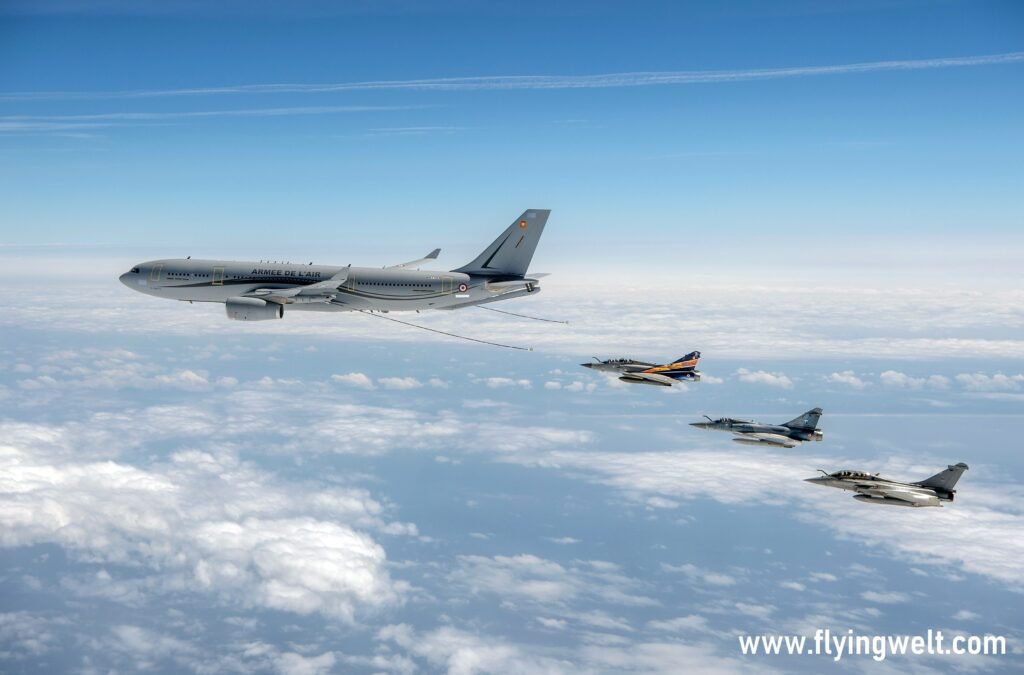
At the heart of the A330 MRTT’s capabilities lies its exceptional aerial refueling system. To refuel receptacle-equipped aircraft such as the F-16 Fighting Falcon, F-35A Lightning II, or another the A330 MRTT when fitted with a Universal Aerial Refuelling Receptacle Slipway Installation, UARRSI, the A330 MRTT is provided with the advanced Airbus Defence and Space Aerial Refuelling Boom System (ARBS). From fighter jets to transport planes, the MRTT provides an essential lifeline, extending their range and endurance, allowing them to conduct long-range missions and stay airborne for extended periods.
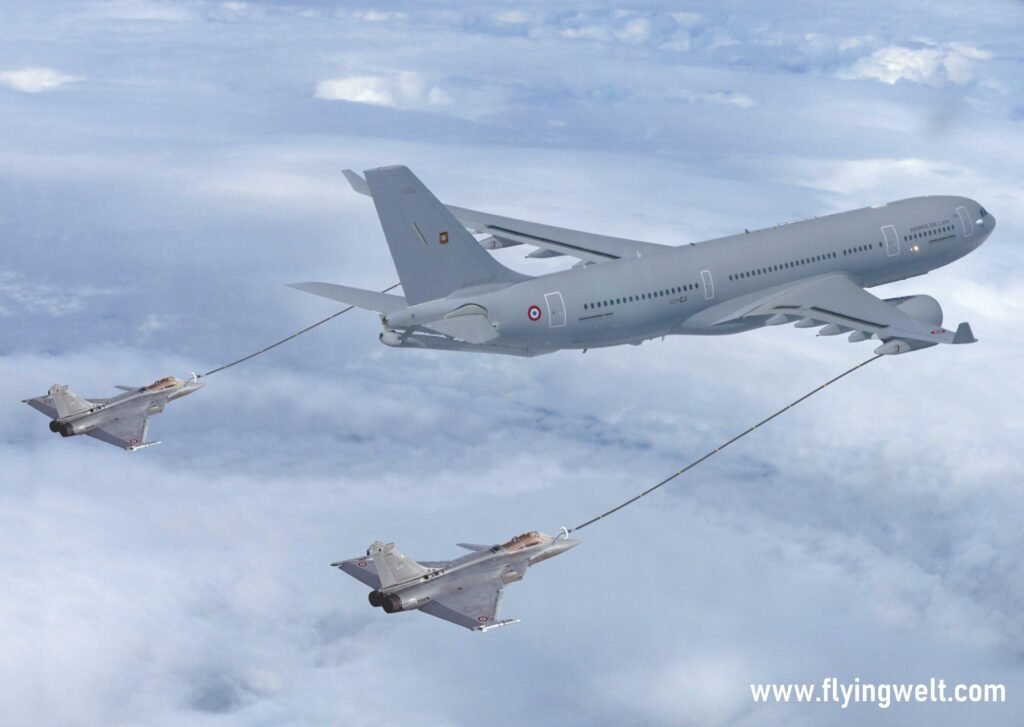
Its fast fuel flow rate (up to a maximum of 3,600 kg/min – 1,200 US gal/min) makes the ARBS the most capable new-generation flight-proven boom available. Excellent handling qualities are provided for the operation of the ARBS, rated as such by independent assessments.
2. Multi-Role Transport Capability
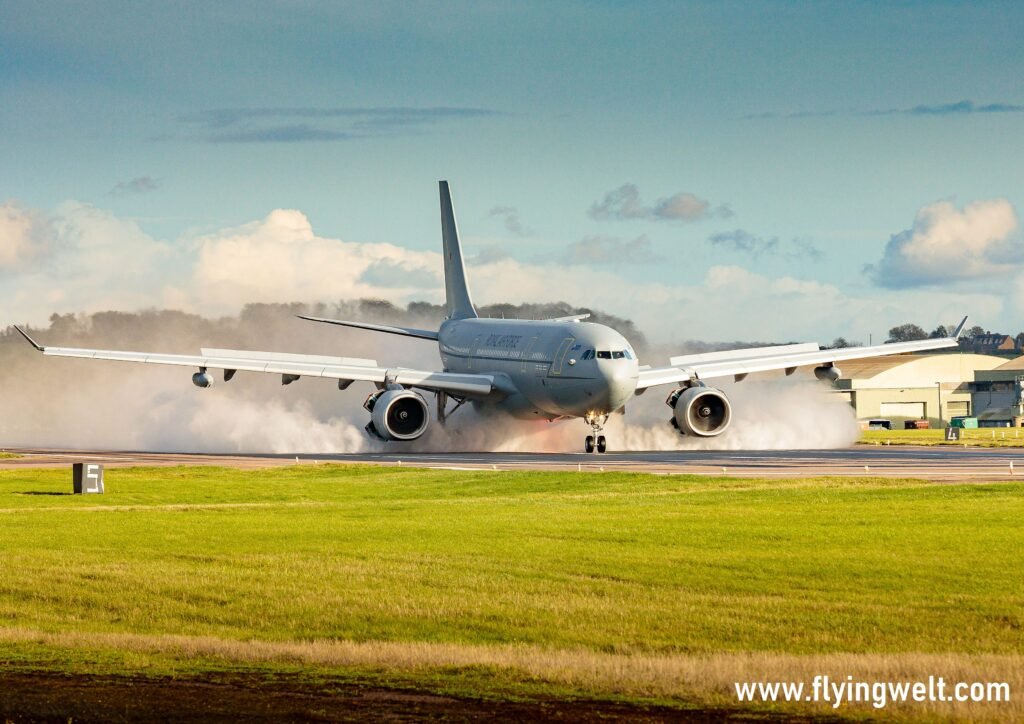
The A330 MRTT’s versatility extends beyond its aerial refueling capabilities. As a true multi-role transport aircraft, it can be rapidly reconfigured to support various missions, including troop and cargo transport, medical evacuation, and humanitarian relief operations. Its cavernous cargo hold can carry significant payloads over long distances, making it an ideal choice for rapid deployment of troops and supplies in crisis situations or military deployments.

Furnished with an attractively modern design, the cabin is conceived to ensure optimum seating configurations in every class, maximising capacity and providing airline comfort. These features enable a complete range of interior configurations, from pure passenger and troop transport to the complex customisation required for VIP guests. For example, it can accommodate 266 passengers in a typical two-class configuration or some 300 in a single-class layout.
3. Pay load capacity upto 45 Tonnes / 99,000 lb
The A330 MRTT is capable of carrying a payload of up to 45 tonnes/99,000 lb. The versatility of the A330 MRTT enables cargo to be conveniently stored inside the lower deck in a variety of cargo options covering the full range of existing under-floor cargo containers and pallets, ranging from the LD1 to LD3 to LD6, as well as the standard 88×108 inch 463-L NATO military pallets. Some of the cargo can also be carried as non-palletised “bulk.” Commercial containers and pallets as well as military equipment and other large items are loaded through a cargo door.
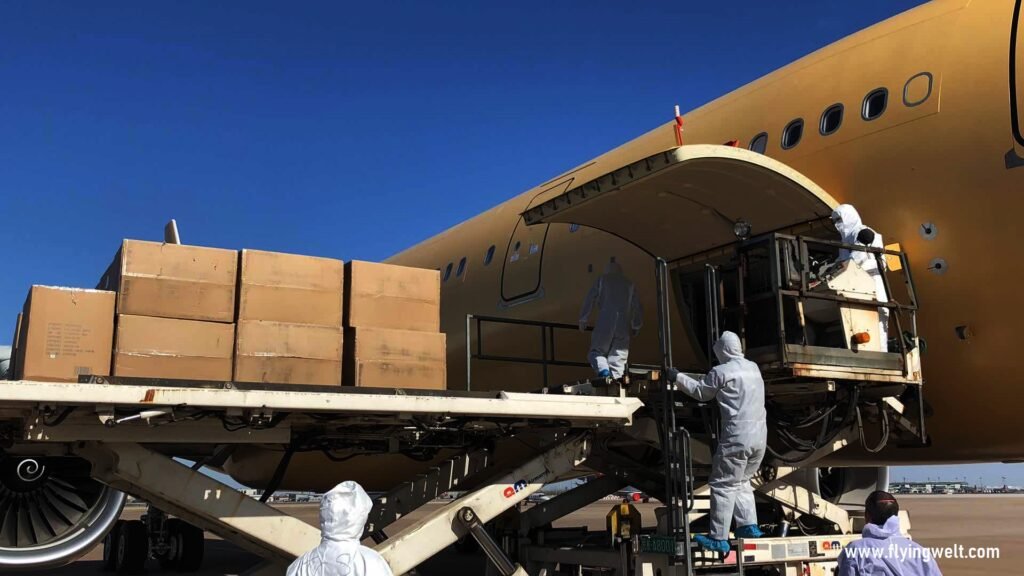
The A330 MRTT is also an outstanding strategic aeromedical evacuation (MedEvac) aircraft. Its large fuselage permits maximum flexibility for up to 130 NATO stretchers to be carried over intercontinental distances. In a “light medevac” configuration, medical beds can be installed above designated fold-down seats. This allows the aircraft to be used as a troop transport on an outbound relief mission, with medical beds stowed in the lower cargo compartments, and then rapidly converted for MedEvac on the return. In an “Intensive MedEvac” configuration, critical care modules can be installed to replicate an intensive care unit in the air. The aircraft could typically carry 28 NATO stretchers, up to six critical care modules, 20 seats for medical staff and 100 passenger seats.
4. Extended Endurance and Range
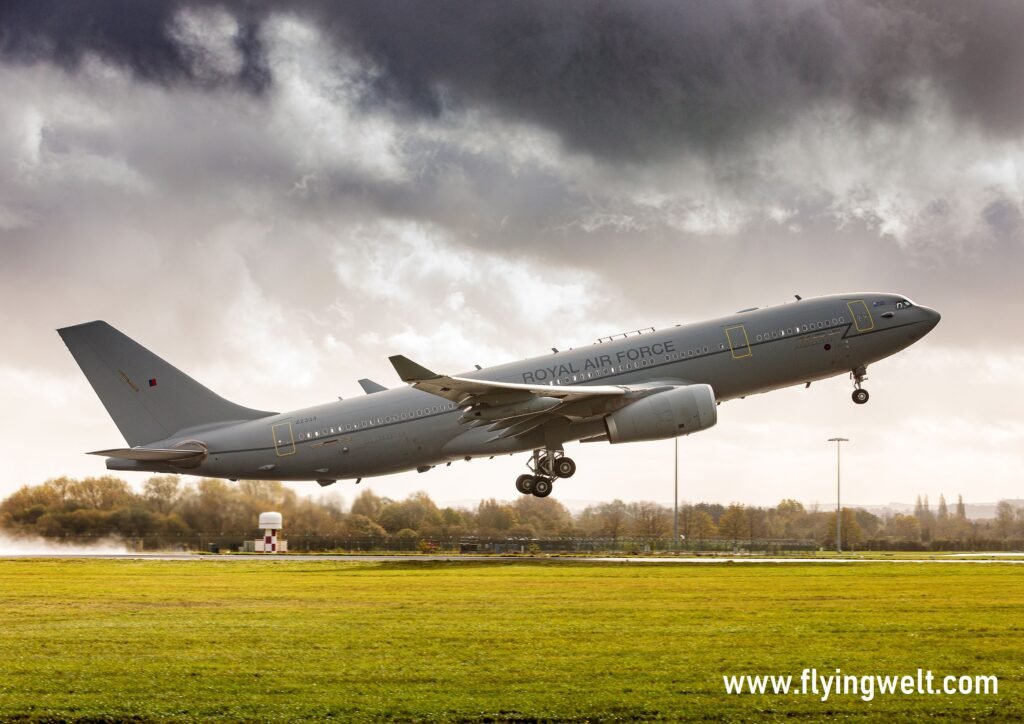
With its impressive fuel capacity and fuel-efficient engines, the A330 MRTT boasts an extended range, enabling non-stop missions covering vast distances. This range capability allows military forces to operate more effectively over remote areas and eliminates the need for multiple refueling stops during long-haul operations. The aircraft’s endurance, coupled with its in-flight refueling capacity, empowers strategic planning and enhances mission success across the spectrum of military operations. The A330 MRTT can fly 1000 nautical miles and offload up to 70 tonnes of fuel in one hour, 25% more than its competitors like Ilyushin IL-78.
5. State-of-the-Art Avionics and Systems
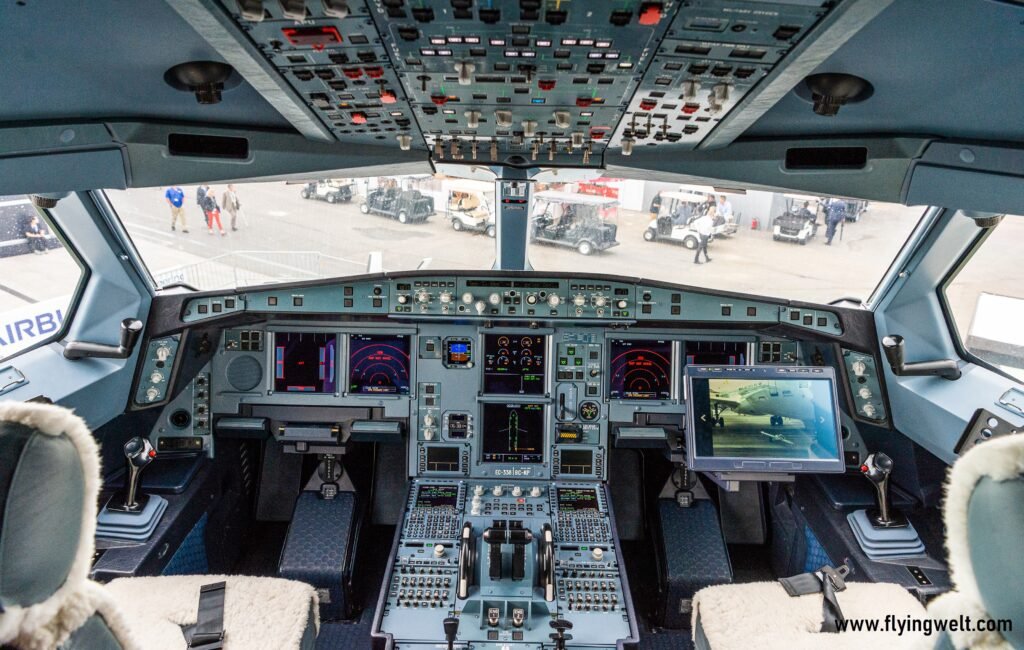
As a modern military aircraft, the A330 MRTT is equipped with advanced avionics and systems that ensure seamless and safe operations. The flight deck of the A330 MRTT’s cockpit has a refuelling officer’s station behind the pilot and co-pilot seats.
An electronic flight information system provides six large interchangeable displays with duplicated primary flight and navigation displays (PFD and ND) and electronic centralised aircraft monitors (ECAM). The pilot and co-pilot positions have sidestick controllers and rudder pedals.
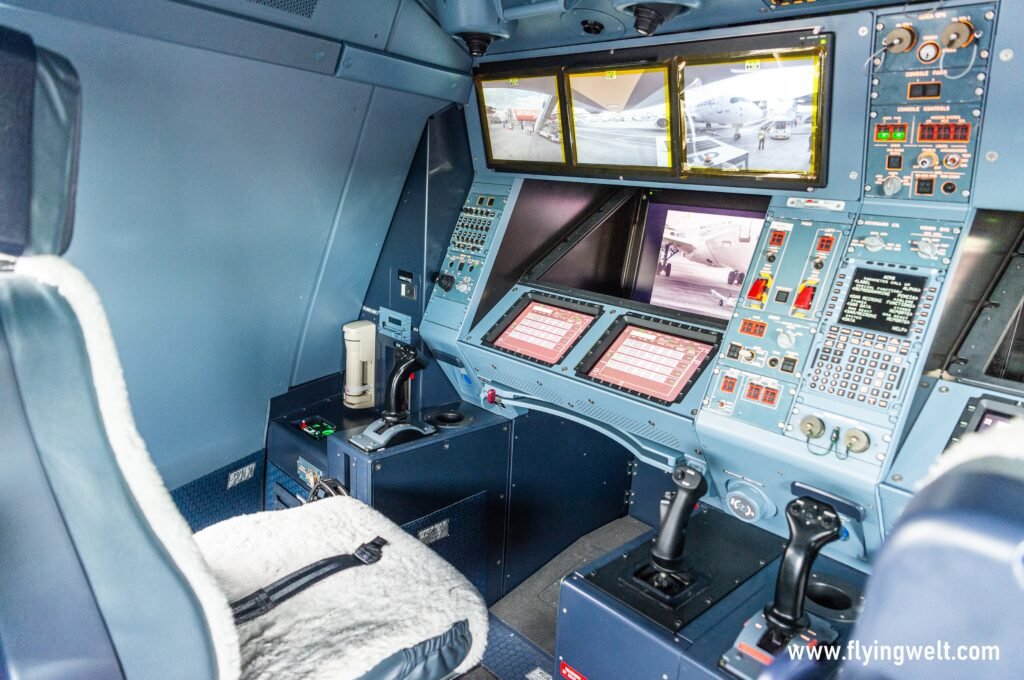
The Airbus 330 MRTT is equipped with an Airbus future navigation system (FANS-A), including a Honeywell flight management system and Smiths digital control and display system. The fly-by-wire computer suite includes three flight control primary computers and two flight control secondary computers, all operating continuously. The aircraft also incorporates state-of-the-art defensive systems, ensuring its survivability in high-threat environments.
The new Airbus A330 MRTT aircraft will be equipped with ScioTeq Advanced Avionics Displays which includes PU-5200 Display Computer, RDU-3068 Display and MOSArt® Open Platform Software.
6. Rolls-Royce Trent 772B jet engine
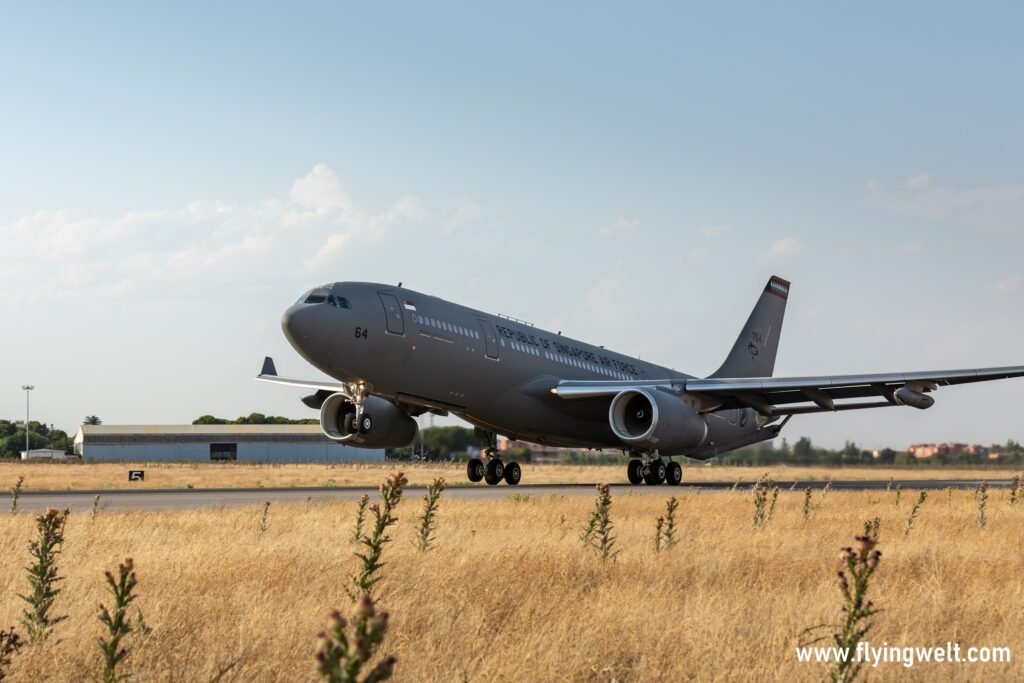
The Airbus 330 MRTT is powered by two Rolls-Royce Trent 772B jet engines, each providing 71,100 lbf (316 kN) of thrust. The aircraft is also available with the more powerful General Electric CF6-80E1A3 engines, each producing 72,000 lbf (320 kN) of thrust. The auxiliary power unit is a Hamilton Sundstrand GTCP 331-350C.
The main four-wheel bogie landing gear, the fuselage centre line twin-wheel auxiliary gear and the twin wheel nose units are usually fitted with Goodyear tyres. The runway length for maximum take-off weight is 2,650m, and the ground turning radius is 43.6m.
Technical Specification
| General Dimensions | |
| Overall length | 58.80 m (193 ft) |
| Overall height | 17.40 m (57 ft) |
| Wing Span | 60.30 m (198 ft) |
| Wing Area | 362 m2 (3897 ft2) |
| Maximum Weights | |
| Maximum Take-Off Weight (structural) MTOW | 233 000 kg (514 000 lb) |
| Maximum Landing Weight (structural) MLW | 182 000 kg (401 000 lb) |
| Maximum Fuel Weight MFW | 111 000 kg (245 000 lb) |
| Maximum payload (Any combination of PA & cargo) | 45 000 kg (99 000 lb) |
| Engine | |
| General Electric CF6-80E1A3 | 320 kN (72,000 lbf) |
| Rolls-Royce Trent 772B | 316 kN (71,000 lbf) |
| Range | |
| Range with maximum payload (ISA+15) | 7000 km (3800 nm) |
| Range with 40 tonnes payload (ISA+15) | 8400 km (4500 nm) |
| Range with 30 tonnes payload (ISA+15) | 10,200 km (5500 nm) |
| Range with 20 tonnes payload (ISA+15) | 12,000 km (6500 nm) |
| Range with 10 tonnes payload (ISA+15) | 13,900 km (7500 nm) |
| Performance | |
| Maximum Cruise Altitude | 12 600 m (41 500 ft) |
| Maximum operating altitude – AAR mission | 10 700 m (35 000 ft) |
| Maximum cruise speed | Mach 0.86 |
| Typical Cruise Speed | Mach 0.82 |
| Refueling envelope | 180-325 kt CAS |
| Take-off and landing performance | |
| Landing distance – LFL-SL MLW | 1750 m (5700 ft) |
| Landing distance – LFL-2000 ft, MLW | 1800 m (6000 ft) |
| Take-off distance – SL, ISA, MTOW | 2800 m (9200 ft) |
| Take-off distance – 2000 ft, ISA, MTOW | 3000 m (10 000 ft) |
| Crew | |
| Flight crew | 2 |
| Mission Crew | 1 Air refueling operator and 1 mission planning system operator (optional) |
